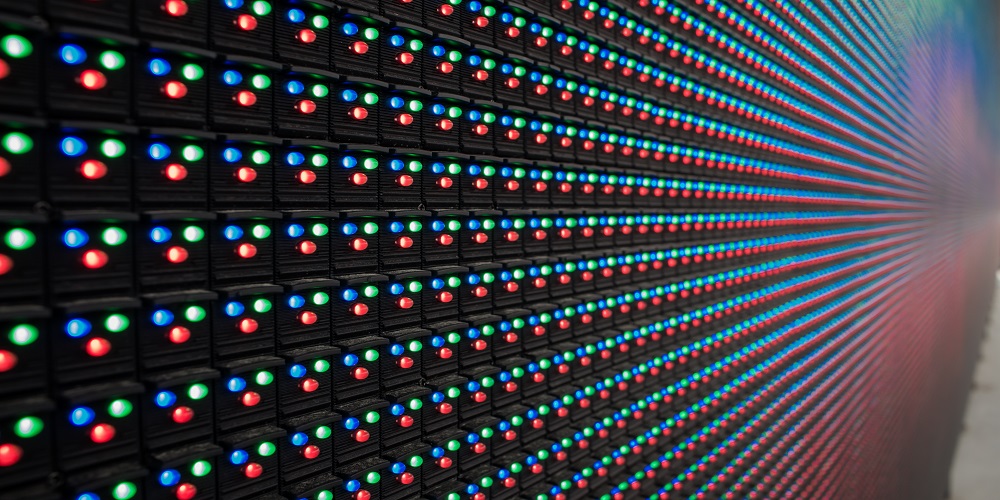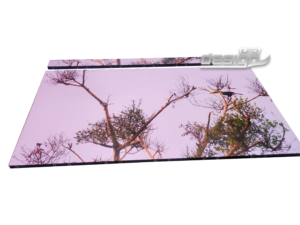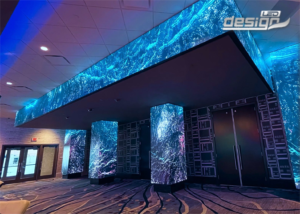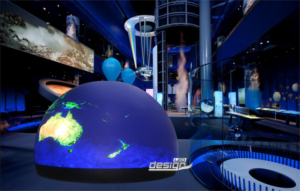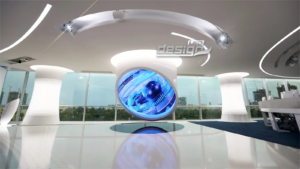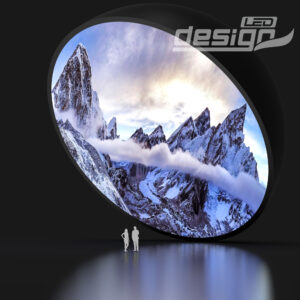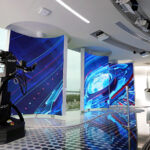SOME BASIC FACTS ABOUT LEDS
Although they use a more homogenous lighting technique, LED display technology is similar to LCD panels (liquid crystal display or liquid crystal display). They function similarly to traditional LCDs, with 40% less power usage and without altering image resolution or brightness. Furthermore, the images have a stronger contrast and a wider black gamut.
Various varieties of LED display technology are on the market today, all sold in conjunction with LCD screens. As a result, the screens are substantially thinner, with thicknesses that occasionally do not surpass 3 cm.
- TYPES OF LED TECHNOLOGY
LED edge lighting
The light-emitting diodes on this sort of screen placed along the whole border of the screen, either entirely enclosing it or occupying only one of the four ends. However, the inclusion of light reflectors enables uniform illumination throughout the whole surface of the screen, but less precisely than in Full LED monitors. Edge LED screens, of course, are thinner than the latter.
Full LED lighting with a screen
Many televisions already use diode dispersion in Full LED display technology. In this scenario, the LEDs used for backlighting hid below the LCD panel, completely encircling it.
Direct LED
This approach is rarely utilising because the image quality it gives is inferior to the prior situations. Furthermore, the spread of LED illumination necessitates thicker televisions. The diodes on direct LED screens situatd on the rear. This feature is quite similar to the Full LED but with one difference: the number of LEDs is noticeably fewer; hence, the lighting is not as good. Although brighter than the Edge LED, they do not perform as well as the Full LED.
Edge LED with local dimming.
Each LED contains artificial intelligence that enables it to turn on and off. In other words, the diodes light by sectors based on the information received from the broadcast images and the board’s digital processor. This feature means that if a programme or movie record in excessive or insufficient light circumstances, the Edge LED with the local dimming function could solve this issue, resulting in images with high realism.
However, some viewers may prefer to avoid this default setting, particularly if they watch a film noir, horror, or specifically shot in dark or night environments.
Full LED lighting with local dimming
The Edge LED technology screen provides the same advantages regarding resolving lighting difficulties during the broadcast. Although, as previously said, the screen is thicker in this scenario, the light is much more homogenous.
OLED
It is based on using organic light-emitting diodes (also known as organic light-emitting diodes in English). This type of diode has an electroluminescent layer composed of an organic film.
THE MAIN ADVANTAGES OF LED TECHNOLOGY
LED technology has acquired broad appeal and adoption across various applications due to its considerable benefits over previous lighting technologies such as incandescent and fluorescent lighting. In this section, I’ll go through the primary benefits of LED display technology:
Energy Efficiency
LED lights are extremely energy efficient, converting considerable electrical energy into light. LEDs use substantially less electricity for the same light output as traditional lighting, resulting in lower energy bills and carbon footprint.
Longevity and Durability
LEDs have a far longer lifespan than traditional lights. They can last 25,000 to 100,000 hours or more, depending on the quality and usage. Because of this endurance, the frequency of replacements is reduced, resulting in cheaper maintenance costs and less waste.
Low Heat Emission
LEDs emit extremely little heat compared to traditional bulbs, which emit a large quantity of heat. This makes LEDs safer to touch and lowers the danger of fire hazards, especially in applications where lights are left on for lengthy periods.
Instant Light and Flicker-Free
LEDs produce quick light and are flicker-free, unlike other types of lighting, which may require some warm-up time. Furthermore, LEDs do not flicker, resulting in continuous and comfortable illumination that is useful for work and decreases eye strain.
LED Technology Allows for a Wide range of Colours and Colour Temperatures
LED technology allows for a wide range of colours and colour temperatures, making them appropriate for various applications. LEDs can provide the desired colours whether you need warm or cool illumination or even coloured lighting for ornamental or practical applications.
Dimmability and Control
LEDs are dimmable and controllable, allowing you to modify the brightness and atmosphere of a space. This function improves energy savings and enables a more personalised lighting experience depending on unique needs or preferences.
Directional Lighting and Design Flexibility
Because LEDs generate light in a precise direction, reflectors and diffusers are not required to direct the light. Because of their directed nature makes efficient lighting systems, precise spotlighting, and focused illumination in specific areas possible.
Environmentally Friendly
LEDs are environment friendly since they do not contain toxic compounds such as mercury, lead, or other hazardous materials found in some older bulbs—furthermore, their longer longevity and energy efficiency help to reduce greenhouse gas emissions.
Conclusion
Lastly, investigating LED display technologies demonstrates their versatility and progress, appealing to various tastes and demands. Each variety, from Edge LED to Full LED, straight LED, and OLED, adds features to the table, boosting the overall display experience.
LED display technology is at the forefront of modern lighting, with numerous advantages. It excels in energy efficiency, reducing power usage and environmental effects significantly. LEDs’ extraordinary lifetime, little heat production, and immediate, flicker-free lighting ensure both cost-effectiveness and user comfort. The large colour spectrum and controllability provide adaptive lighting solutions that appeal to various environments and moods.
Furthermore, LED technology’s directed lighting and eco-friendliness make it a clear choice for the future of lighting, offering an efficient, versatile, and ecologically responsible society. As LED display technology advances, the prospect for additional advancements and widespread implementation remains promising.
About DesignLED
DesignLED is a global leader in LED display technology, specializing in the development, manufacturing, and distribution of high-quality, innovative LED display solutions. With a focus on MicroLED displays and immersive LED Dome experiences, DesignLED delivers cutting-edge products that cater to a wide range of industries, including broadcasting, digital signage, and entertainment. Committed to delivering unparalleled visual performance and energy efficiency, DesignLED strives to empower businesses and content creators with the tools to create stunning and engaging visual experiences.
